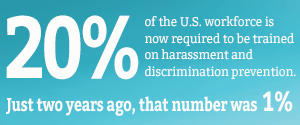In any office environment, supervisors have a responsibility to work with employees who possess a wide range of personality traits and behaviors. Melding all of them together—from the introvert to the know-it-all—into a dynamic workforce isn’t always the easiest of tasks. Fortunately, there’s help. There are tools and techniques out there that employers can utilize to help their diverse workers remain productive, work together, and assimilate into a common, corporate culture.
When hiring new employees this year, local businesses should look beyond an individual’s resume and instead take their personality into account—and, in the meantime, enhance their awareness of how to manage some of the more common personality types they may already have in the office. This includes introverts, micromanagers, procrastinators, perfectionists and those who are bottom-line oriented.
“Approximately 30 percent of an employee’s performance in the workplace is tied to their individual behaviors,” says Elizabeth Faircloth, vice president of Augur, Inc., a management consulting firm in Bordentown. “I don’t think many companies realize just how important an employee’s personality actually is.”
According to Kent Jones, president of Farmers Mutual Fire Insurance Company of Salem County, team leaders must be particularly mindful of personality types when assembling teams to work collectively on projects. “You don’t want to pair someone who’s shy with someone who’s domineering,” he advises.
It’s also up to managers to help employees who tend to be loners become more active in corporate gatherings and feel more at ease in social situations. “It’s the questions and phraseology you use to help draw someone out and make them feel comfortable,” he says. That may mean asking an introvert direct questions or soliciting their opinions, as well as offering positive reinforcement when they do speak up or work collaboratively with co-workers.
On the other hand, employers may have to grapple with employees who genuinely enjoy being in the spotlight and who want to dive in and assume control of projects and day-to-day business operations. “If you have a dominant personality type that often takes the lead, they like to feel in control,” Faircloth says.
Employers should help micromanagers recognize their own natural behaviors, such as when they monopolize the conversation during meetings or are reluctant to accept help from co-workers on group projects. “Becoming more aware of their own style can help employees see themselves and their behaviors in an objective way,” she says.
Experts suggest taking a controlling, extroverted employee aside and asking them to share the floor with their co-workers more often during meetings, or setting guidelines for how often their fellow team members are expected to report back with updates on their progress on any given assignment or project. “When it comes to introverts and extroverts, it often boils down to the amount of communication they need. … People may not be trying to micromanage every situation, they may just want to feel in the loop,” Faircloth says.
It may not always be easy to determine what motivates an employee’s actions, but taking the time to better understand another person’s behavior could serve as the key to a more productive, unified work environment. “It’s up to the group leader or manager to be a chameleon and try to understand the dynamics of a group … that’s what sets your employees and your company up for success,” says Angela Snyder, CEO of Fulton Bank of New Jersey in Mount Laurel. “If you don’t understand someone’s personality type or what motivates their behavior, you’re never going to be able to help assimilate them into your company’s office culture.”
That holds true even for personality types that can prove most problematic in the workplace, such as procrastinators. “If one of your employees is a procrastinator, you want to focus on project management,” suggests Richard Hohmann, senior consultant and vice president for Innovative Leadership of the Delaware Valley in Cherry Hill and Marmora, a leadership and management training company. While the average employee may need an idea of a project’s scope and deadline, a procrastinator is better served with an established start date and more specific timeline.
“For procrastinators, you want to set short-term goals instead of long-term goals,” Snyder agrees. “They want to complete the project; they just need some nudging along the way.”
In some cases, an employee may be detail-oriented to a fault; a perfectionist can become so wrapped up in the intricacies of a project that they invest too much time in their efforts to produce a flawless final product. For employers, assigning projects that will be bolstered by a perfectionist’s natural tendencies is key. “If you have a project where attention to detail is critical, you don’t necessarily want to put your most creative employee on that—it’s a job for a perfectionist,” Snyder says.
Another trait employers may recognize in their employees is how they prefer to process information, and the urgency with which they complete their work. Someone who’s bottom-line oriented may become frustrated with long-winded explanations or frequent requests for status updates, while more laid back employees are more apt to take the time to be creative and analytical in the way they approach projects.
“There are people who want everything to be presented in a matter-of-fact way … they’re in a rush, and they want things done right now,” says Ellen Hohmann, president of Innovative Leadership of the Delaware Valley. “Then there are those who are more people-oriented, creative and innovative … and they may need a little bit more time.”
Managers working with someone who is bottom-line oriented might consider presenting information in bullet point form, while creative, laid-back employees are better served working on open-ended projects that could benefit from inventive approaches.
“We all wear different colored glasses based on who we are, and when dealing with people and their behaviors, it’s not always black and white,” concludes Ellen Hohmann. “An employer has to understand each of their employees, and learn the best ways to approach them.”
Published (and copyrighted) in South Jersey Biz, Volume 2, Issue 1 (January, 2012).
For more info on South Jersey Biz, click here.
To subscribe to South Jersey Biz, click here.
To advertise in South Jersey Biz, click here.








